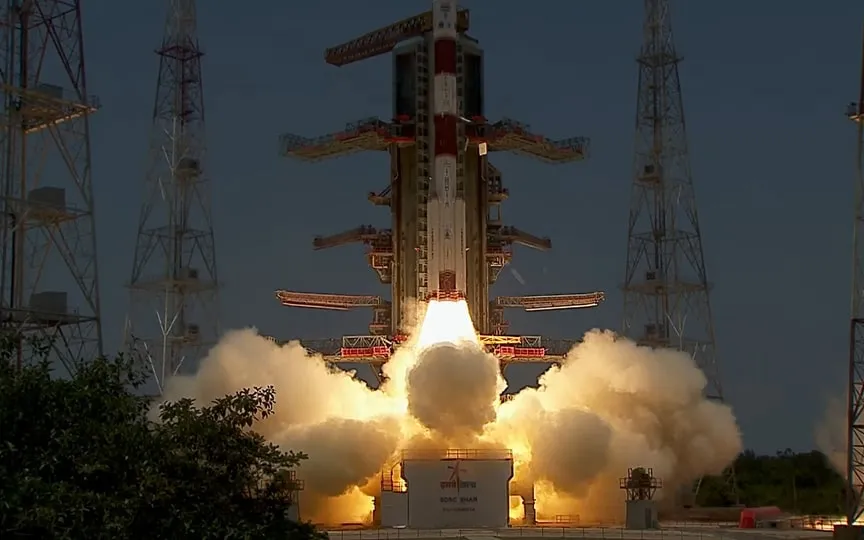India Launches First Solar Mission to Study the Sun with Aditya-L1 Liftoff
India’s inaugural solar mission, a space-based observatory-class endeavor, commenced on Saturday, September 2 at 11:50 AM IST from the Satish Dhawan Space Centre’s launch pad 2 in Sriharikota. Following the triumph of Chandrayaan-3’s lunar soft landing on August 23, Aditya-L1 marks India’s second space venture this year. Recently, the Indian Space Research Organisation (ISRO) rolled out the Aditya-L1 spacecraft alongside the PSLV-C57 onto the launch pad, conducting meticulous launch rehearsals to ensure a seamless operation. Presently, the spacecraft has embarked on its journey towards the Sun, covering an approximate distance of 1.5 million kilometers to be positioned in the halo orbit.
Aditya-L1 was launched
Just a few minutes before launch, an autonomous launch sequence began, after which the spacecraft lifted off at 11:50 am IST and began its 1.5 million km journey to the Lagrange point (L1) of the Sun-Earth system. This Vantage Point is useful for the mission because it provides an unobstructed view of the Sun, unaffected by obscurations or eclipses.
Dr. Anil Bharadwaj, Director of the Physical Research Laboratory in Ahmedabad, which developed the Aditya Solar Wind Particle Experiment (ASPEX) and Plasma Analyzer Package for Aditya (PAPA) payloads, “First of all, let me tell you that Aditya-L1 is multi-wavelength, multi-instrument and multi-directional. Multi-wavelength because it works in the X-ray, UV and visible spectrums, Multi-instrumental because it has 7 instruments on board, and omni-directional because it not only looks at the Sun but also around it”.
After separation of the first and second rocket stages, the payload was also separated at 2 minutes 40 seconds. The third stage successfully separated at 900 seconds at an altitude of 2,880 kilometers above the earth’s surface.
Ahead of the launch, ISRO’s former chairman G. Madhavan Nair told ANI, “This mission is very important. Aditya L-1 will be positioned around Lagrangian point 1, where the gravitational force of Earth and Sun practically cancels and with minimal fuel we can sustain spacecraft there. Also, 24 /7 observation is possible. Seven instruments are placed on the spacecraft. Information from this mission helps to explain various phenomena in the atmosphere, climate change studies, etc.
About the Aditya-L1 mission
According to ISRO, Aditya-L1 is the Indian space agency’s first observatory-class space-based solar mission. The spacecraft will be placed in a halo orbit around the first Lagrange point of the Sun-Earth system, L1, and will carry seven payloads, including particle and electronic detectors that will study the Sun’s layers, such as the chromosphere, corona, and photosphere.
The Aditya-L1 spacecraft will join the Solar and Heliospheric Observatory at the L1 point, which was jointly launched by the European Space Agency (ESA) and the National Aeronautics and Space Administration (NASA) in 1995 to study the inside out of the Sun.




